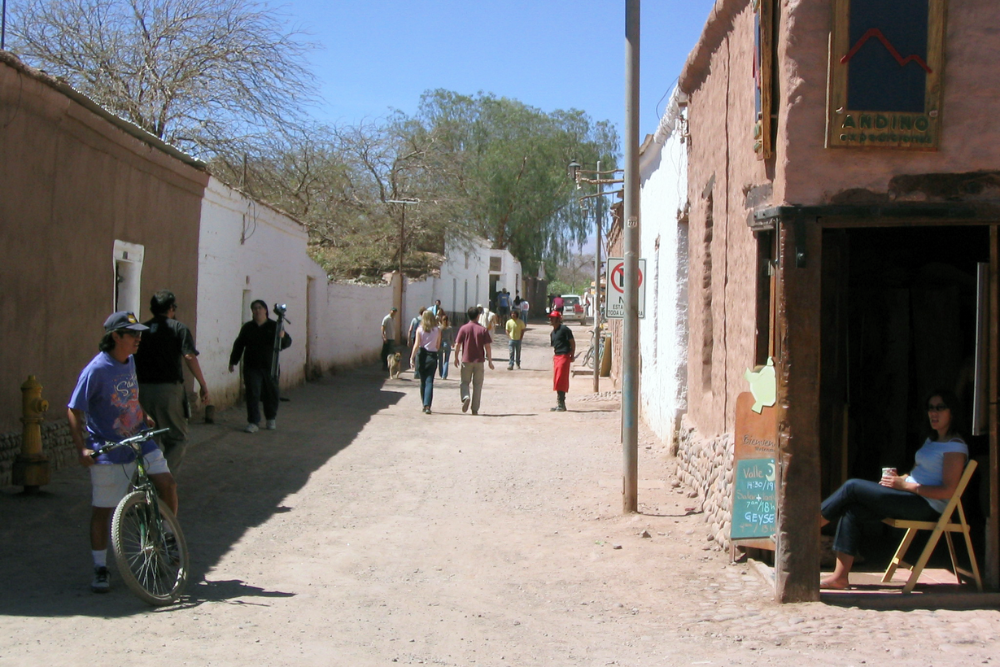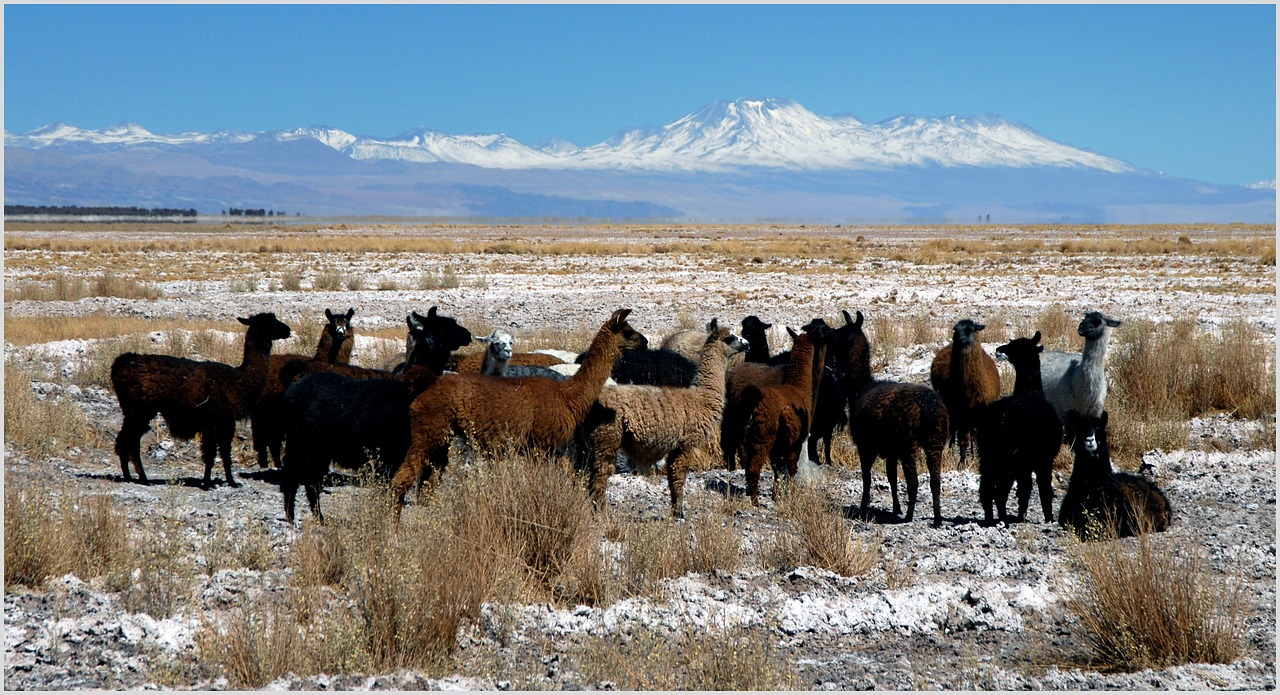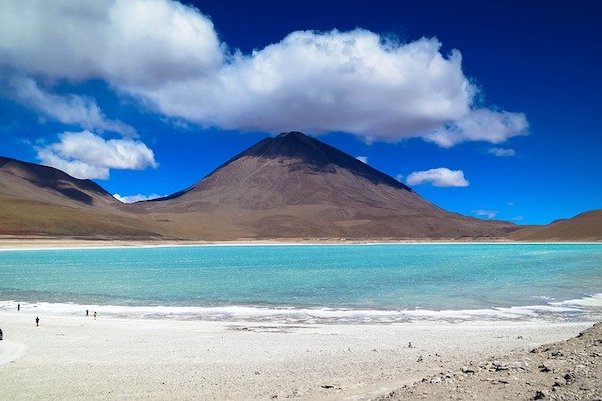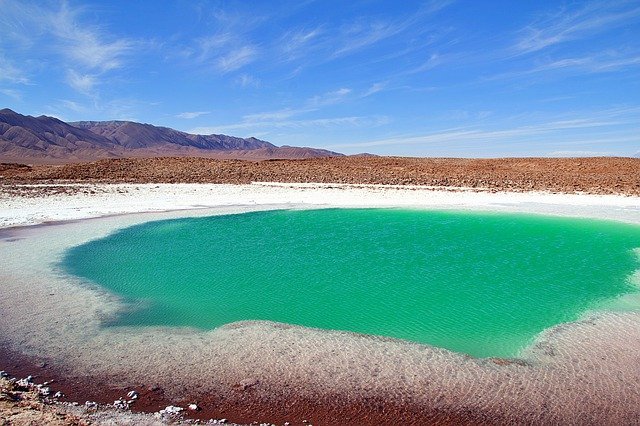CHILE
Mummies on Mars
By Chadd McGlone
Chapel Hill, NC, United States
If you’ve ever seen a sci-fi movie set on Mars, odds are the landscape in Chile will seem familiar. The Atacama Desert is one of the most popular locations for movies that need to evoke a remote, desolate planet.
Why is this region so barren? Along its eastern border, the peaks of Andes Mountains, reaching as high as 20,000 feet, prevent clouds from dropping precipitation. Although the Pacific Ocean is just to the west, another mountain chain keeps moisture at bay. In fact, some areas have never received any rainfall at all.
Salt Flats
Adding to its unworldly scenery is the third largest salt flat in the world, the Salar de Atacama. Once covered by water thousands of years ago, evaporation left behind an expanse of stark whiteness covering approximately 1200 square miles. The small lake at its center has a salinity of as much as 28 percent, compared to the 3.5 percent found in the ocean. Courageous swimmers report that you can float as easily in this lake as you can on the Dead Sea, which has a salinity of 34 percent.
Ancient Humans
You may be surprised to know that people make their livelihood in this extraterrestrial landscape that averages a scant 12 millimeters of rainfall per year. In fact, evidence of human settlement has proven that over 7,000 years ago, hardy travelers followed water sources inland from coastal fishing villages and supported themselves with llama herding and subsistence agriculture. Archaeologists have found mummified remains dating back to approximately 5050 BCE. That’s over 2,000 years before the oldest Egyptian mummies.
Now, the desert is home to closely knit communities whose capital city is San Pedro de Atacama. With a population of approximately 5,000, this town was formed centuries ago around an oasis and now warmly welcomes tourists.
 San Pedro de Atacama. Photo Credit: Phil Whitehouse via Flickr.
San Pedro de Atacama. Photo Credit: Phil Whitehouse via Flickr.
Community Traditions
Longtime residents of the community have a deep, spiritual connection to this remarkable terrain. They follow the religious traditions of their ancestors, believing that supernatural beings animate every element of the landscape. They pray to the divine Pachamama, translated as Mother Earth, whom they hope will bless their herds of llamas and honor their families with prosperity.
Because of the extreme difficulty living in the desert, townspeople rely heavily on one another. They have developed traditions that strengthen community bonds, such as the annual florecimiento (flowering) ceremony. Families gather together to sing songs in the ancient language, share the fruits of the recent harvest and earn good luck by piercing their llamas’ ears. They then attach a colorful wool pom-pom through the perforation to identify the owner of each animal.
So, the Atacama Desert is a place with bedazzled llamas, an alien landscape, and the oldest mummies in the world? Sign me up for a visit!

Have a suggestion for this story? We’d love for you to submit it!


Blank
Blank
Math Resources
- If you were standing on the desert floor at 7,700 feet, how much higher than you are the Andes Mountains?
- If the Andes Mountains are 20 miles away, at what angle will you look to see the top?
- The salinity of ocean water is 3.5 percent. How much water would you need to add to 1,000 milliliters of water from the salt lake (with a salinity of 34 percent) to make it equal to ocean water?
- If a family owns a herd of 35 llamas, how many ears will they need to pierce? If the family can feed only 24 llamas, how many will they have to sell? If they discover that five of the llamas are pregnant, how many llamas will they now need to sell?
- Determine how much average rainfall you have in your hometown. How does it compare to the average rainfall in the Atacama Desert?
- How does the population in the capital city, San Pedro de Atacama, compare to the population of the capital of your state? Or your town? Do you think there are enough people in San Pedro to support a shopping mall?
- If the average family size is eight people, how many children under age 18 live in San Pedro? Justify your answer.
Social Justice Question
For decades, the ancient traditions have slowly been lost as indigenous Atacameños sought economic opportunities in the cities. With the rise of cultural tourism to the desert, however, there are more possibilities to earn an income locally. How would you advise community leaders to balance financial necessity with respect for cultural preservation?
Explore Further
- National Geographic travel story on the Atacama Desert
- Five-minute time-lapse film of desert skies
- A scientist explores Chile’s salt flats to learn about life on Mars
- Satellite view from NASA
Share Your Story
Write your own Global Math Story and send it to us!
Sorry, the comment form is closed at this time.